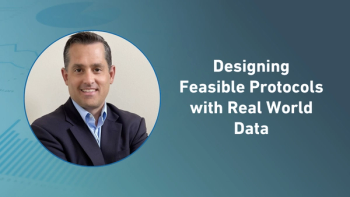
- Applied Clinical Trials-05-01-2011
- Volume 20
- Issue 5
DIA Has New Tracks on Tap for Chicago Show
DIA is increasing its capacity in both live and web-based educational events.
DIA has been in existence since 1964 providing a multidisciplinary neutral forum where professionals involved in the life cycle management of pharmaceuticals, biotechnology, medical devices, and related healthcare products come together to exchange knowledge in the name of global health. It has evolved since then to be a worldwide educational and training resource. On the eve of its US-based DIA 2011 to be held in Chicago, June 19-23, Applied Clinical Trials spoke to its Worldwide Executive Director Paul Pomerantz about DIA.
Paul Pomerantz
"DIA is not an advocate, we facilitate global regulatory capacity and clinical trial excellence," said Pomerantz. For instance, in the area of training, DIA trains regulators worldwide in developing and developed regions, including South Korea, the Middle East, South Africa, China, Europe, Japan, and India. "Wherever clinical trials are being performed, we are ready to support training. And we work closely with the ICH [International Conference on Harmonization] and WHO [World Health Organization] to make training available where it's needed," said Pomerantz.
In the near future, DIA will increase its capacity in both live and web-based educational events.
What is unique about DIA is its ability to bring regulators together. In that way, Pomerantz maintains that DIA helps build awareness among regulators worldwide, allowing them and DIA to address and build training tailored to the current needs.
To that end, the DIA Board of Directors recently approved a Global Regulatory Advisory Forum, which will kick off in June in conjunction with DIA 2011. The forum will be comprised of regulators from the regions covered by DIA to provide a place to come together, talk about their needs, and advise DIA on the best way to get those needs met.
Pomerantz noted: "My sense is that the FDA really does want to be a facilitator of innovation, they don't want to be a barrier. They want to help make it happen. But they also have an obligation to assure the safety of the population. So how do we take what we have learned in the last 50 years of regulation and apply it to totally new paradigms of science and innovation?"
In addition to the Global Regulatory Advisory Forum kick-off, other items new to DIA 2011 include a Global Agency track; an Interoperability Showcase that will be held on the exhibit floor in conjunction with CDISC, HIMSS, and IHE; a Patient Advocacy Fellowship Program; and a mobile app that will allow users to plan their agenda and activities at DIA 2011. All of this information is available at
Another change is to the tracks offered this year. In addition to the new Global Agency track noted above, other new tracks include Medical Devices, SIAC Showcase, and Late-breaking Topics. Under the guidance of this year's DIA Chairperson Kenneth Getz, Senior Research Fellow, Tufts Center for the Study of Drug Development; Chairman CISCRP, other tracks have been combined and renamed. For example, the Clinical Research/Clinical Supplies, Project Management, and Academic Health Centers/Investigative Sites have been combined into a Clinical Operations track. Clinical Data Management and Document Management have been combined into the Research Data and Content Management track with a new area on Study Endpoints.
Pomerantz believes that this year's meeting, with the focus on the convergence of science, medicine, and health, will bring industry stakeholders together to provide a forum for real-time assessment of issues that moves forward with best practices and training.
Said Pomerantz, "In the area of solutions, DIA is very keen to create task forces of thought leaders to help us think through the emerging challenges. These task forces are formed in the areas of medical devices, and real-world outcomes that will focus on the workforce and training needs around CER [comparative effectiveness research] and HTA [health technology assessment]."
Editor's Note: For more on DIA's take on medical devices and global regulatory challenges, go to our podcast interview with Paul Pomerantz, at
Articles in this issue
over 14 years ago
Applied Clinical Trials Digital Edition - May 2011over 14 years ago
Applied Clinical Trials Digital Edition - May 2011, Supplementover 14 years ago
GCLP: an Industry Perspectiveover 14 years ago
Innovation is in for EU's Healthcare Systemover 14 years ago
Study Completion Timesover 14 years ago
Business and News Update May 2011over 14 years ago
Innovation in Ethical Reviewover 14 years ago
Patients are not Schrödinger's Catsover 14 years ago
Protocol Amendments: a Costly Solutionover 14 years ago
ACT Supplement Cover ImageNewsletter
Stay current in clinical research with Applied Clinical Trials, providing expert insights, regulatory updates, and practical strategies for successful clinical trial design and execution.






.png)



.png)



.png)
.png)
